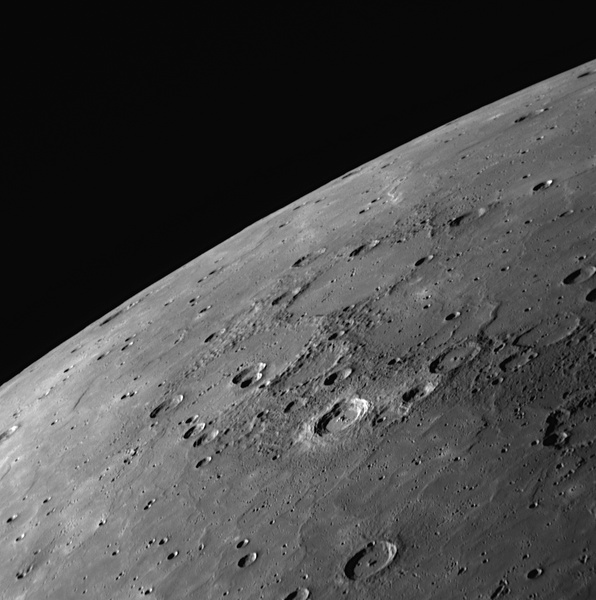
MESSENGER Space Probe at Mercury
March 15, 2011 The Roman god, Mercury, was known as the messenger of the gods. The planet, Mercury, has the most rapid motion of all the planets. Since the god was known for his swiftness, the planet is named after him. The orbit of Mercury around the Sun is only 88 days. The chemical element, Mercury, known as "quicksilver," is also named after him. The Roman Mercury is identified with the Greek god, Hermes, from whom we get the word, "hermetic." Hermetic means different things to different people. Technologists think of an hermetic seal, while it has a mystical connotation to others. | Illustration of Hermes by John Flaxman (1755-1826) for Homer's Odyssey (detail), via Wikimedia Commons Note the winged feet and the caduceus, the god's symbol. The caduceus is often used (mistakenly) as a symbol for medicine. The proper classical symbol for medicine is the Rod of Asclepius, which has a single snake. |
 | US ten cent stamp commemorating Mariner 10. An image of Mercury is on the left, and an image of Venus is shown on the right. The sun is in the background. (Via Wikimedia Commons). |
 |
| Image of Mercury taken by Messenger on September 29, 2009, during its third flyby of the planet. This image shows craters whose rims are just visible after being filled with lava. (Via Wikimedia Commons). |